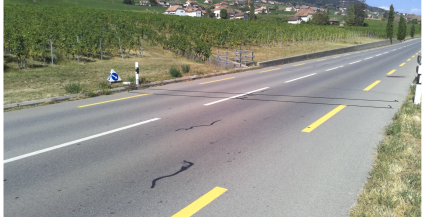
Canton de Vaud – Comptages de trafic quinquennaux

Developing a mobility policy or designing transport projects requires a thorough understanding of how a territory functions and how its users move through it. To this end, Transitec has built expertise in the qualitative and quantitative observation of mobility flows.
Various data sources, sometimes collected directly using our own equipment, can be provided by Transitec, including:
road traffic counts highlighting traffic volumes, vehicle type shares, operating speeds, etc.;
traffic surveys (origin-destination studies and other qualitative data);
surveys of public transport users;
population surveys to assess mobility practices;
digital data such as FCD (Floating Car Data) and FMD (Floating Mobile Data) to measure speeds, congestion levels, and origin-destination patterns;
parking and delivery surveys (occupancy rates, turnover);
and more.
Addressing safety issues through monitoring, particularly for active modes, is also part of our expertise. By observing and analyzing video footage, it is possible to assess the danger levels of certain facilities and to address the issue of "near-miss" incidents.
Based on these core datasets, Transitec is able to:
establish a comprehensive, multimodal monitoring system for a given territory;
assist in building and maintaining a mobility observatory;
develop future mobility projections, taking multiple factors into account;
identify measures to enhance the safety of different road users.

Avenue Auguste-Tissot 4
1006 Lausanne
Switzerland
+41 21 652 55 55